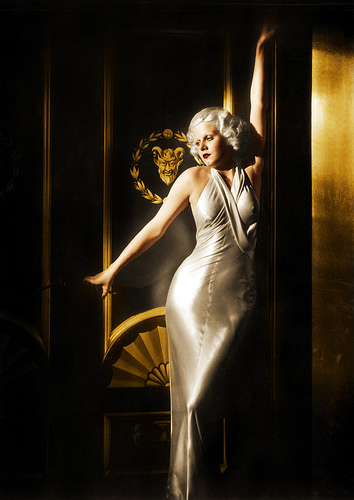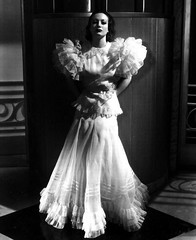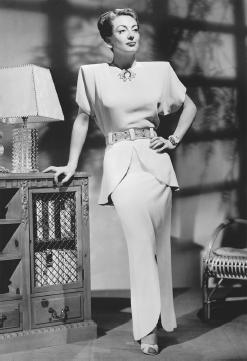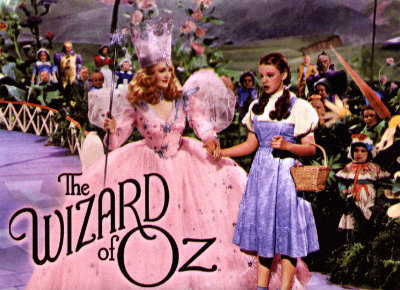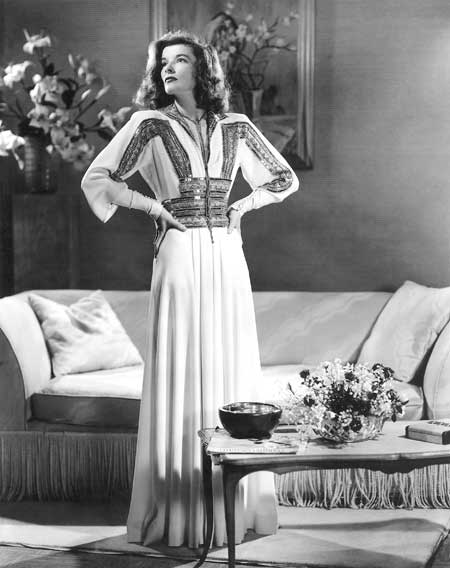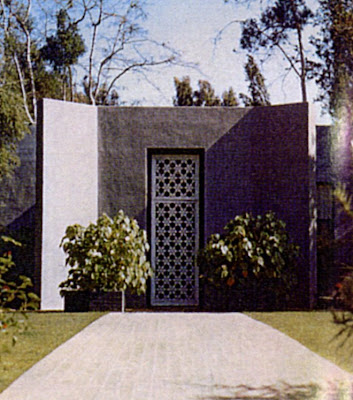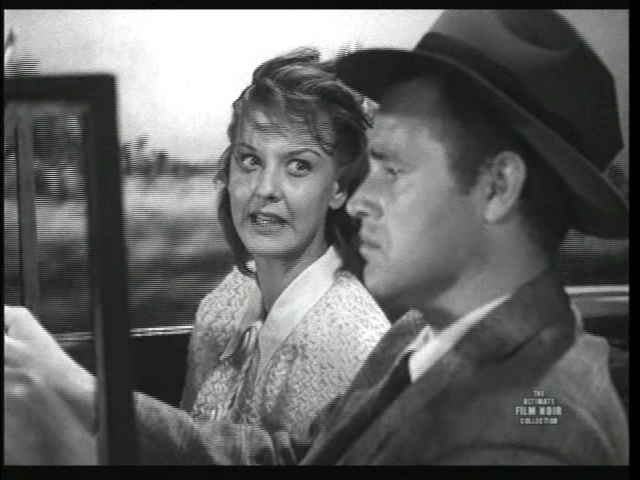Gilbert Adrian 1903-1959
You all know his name and his work. If by some chance you don't, than I'm guessing you mistakenly stumbled onto this blog in a failed Google attempt to find a Felix The Cat emblazoned lug wrench.
It's funny, I'm so used to associating Adrian with dazzling confections like this....
Adrian Adolph Greenberg was born in Connecticut in 1903. It was evident to his immigrant parents from early on that he was a very talented boy. Determined that he would have the best in opportunity they sent their 18 year old to the New York School for Fine and Applied Arts (known now as Parsons) and at 19 in 1922 he transferred to the school's Paris campus. He had barely sampled the quiche when Irving Berlin spotted one of Adrian's costumes on a model while attending the Beaux Arts, and back to New York he went to do the costumes for Berlin's Music Box Revue. He was now doing shows for Berlin, George White and Billy Rose. Here are sketches from "Cinderella" for the Greenwich Village Follies:
It was around this time he is rumored to have had an affair with Valentino, and whether true or not, it is at this time that we, Enter The Crazy Lady. Natacha Rambova, (Mrs. Valentino) brought Adrian to Hollywood to create for her husband's films, and fortunately for Gilbert as Valentino didn't have many movies left in him, he was able to catch the eye of others. He did a Connie Thalmadge/Ronald Colman picture for Joe Schenck. Then Mr. DeMille grabbed him. He became, for his next 25 pictures, part of the DeMille Pictures Corporation in house design team which also included (before he became a director) another of Adrian's lovers, Mitchell Leisen.
Adrian found his permanent home at MGM when the DeMille operations moved there in late '28. In 1929 he signed a contract with LB Mayer at $500 a week that included the sumptuous credit line: Gowns by Adrian. Whole encyclopedias could be written about Adrian's MGM years. And they already have. So let's just have a look at a few iconic pieces that influenced the fashion buying public and carved the legacy of the Adrian name.
The Garbo Slouch Hat
Harlow in bias cut silk satin.
And if you think I'm gonna bring up Harlow without including this, well then, you just don't know me, now do you.
This one is so famous in both the worlds of film and fashion history
that it's simply known as "The Letty Lynton Dress".
Macy's carried a knock-off of it and reportedly sold
a half million copies--In the middle of the depression!
(I've never liked this dress. Sorry.)
that it's simply known as "The Letty Lynton Dress".
Macy's carried a knock-off of it and reportedly sold
a half million copies--In the middle of the depression!
(I've never liked this dress. Sorry.)
Though this one is from his work for Crawford on "Humoresque", it is the sort of end-game of the
'Crawford Shoulders Project' that the two of them undertook years earlier.
I can't imagine that he ever had more fun than doing the
Sylvia Fowler character in "The Women".
Stop me if you've seen this one.
The wonderful Kate in "The Philadelphia Story".
Hedy Lamarr in "Ziegfeld Girl"
Sylvia Fowler character in "The Women".
Stop me if you've seen this one.
The wonderful Kate in "The Philadelphia Story".
Hedy Lamarr in "Ziegfeld Girl"
Now in all fairness, it was Madame Vionnet who began the bias cut and Schiaparelli who started padding shoulders, but it was Gilbert Adrian who, personalizing those looks, stuffed 'em with the Garbos, Crawfords, Harlows and Shearers and made the real-life shop girls pry open their meager purses.
"It was because of Garbo that I left MGM. In her last picture they wanted to make her a sweater girl, a real American type. I said, 'When the glamor ends for Garbo, it also ends for me. She has created a type. If you destroy that illusion, you destroy her.' When Garbo walked out of the studio, glamor went with her, and so did I."
Now don't think that Adrian spent his retirement from the studio on booze, boys and debauchery. For starters, he walked out of the MGM gates on Washington Blvd. as a husband and father! In 1939 he married semi retired actress Janet Gaynor and within short order, she produced their son, Robin. While this was, no doubt, a lavender marriage (Bob Cummings famously quipped, "Janet Gaynor's husband was Adrian, but her wife was Mary Martin.), the child was apparently created in the 'conventional' manor. The story is told that when Gaynor was going through a brutal and difficult labor and delivery, a doctor told Adrian that she might very well lose the child. A nurse overheard him whining, "Oh no, I'll have to go through that again."
The opening of Adrian Ltd. on Wilshire Blvd. in Beverly Hills couldn't have happened at a better time.
The Nazi occupation of Paris in 1940 had effectively cut all information of what was happening in French fashion off, and American designers suddenly had the uninterrupted attention of a captive audience. Adrian stepped up to the plate to deal with severe fabric rationing and a mood of patriotic sacrifice by producing simple, elegant suits that utilize a genius of piece work cutting and detail. He also selected one store in every major city that carried his collection.
And when the war ended and materials were once again available, he let loose.
He created two perfumes in '46: Saint and Sinner.
In 1948 he opened a boutique in Manhattan.
In 1951 they redecorated the house:
All was well until 1952 when he suffered a heart attack. Just like that, he quit designing and the family moved to a coffee plantation in Brazil. Mary Martin and her husband Richard Halliday (who did the decorating and cooking) lived across the road. Hmm.
In 1959 while back in the states to do the costumes for the Broadway play "Camelot" Gilbert Adrian died. The news said heart attack, others say his death was later ruled a suicide.
The big, fat surprise of this wonderful man's wonderful work, is that since the Academy didn't begin awarding Costume Design until 1948, Adrian never received an Oscar.
The opening of Adrian Ltd. on Wilshire Blvd. in Beverly Hills couldn't have happened at a better time.
The Nazi occupation of Paris in 1940 had effectively cut all information of what was happening in French fashion off, and American designers suddenly had the uninterrupted attention of a captive audience. Adrian stepped up to the plate to deal with severe fabric rationing and a mood of patriotic sacrifice by producing simple, elegant suits that utilize a genius of piece work cutting and detail. He also selected one store in every major city that carried his collection.
And when the war ended and materials were once again available, he let loose.
He created two perfumes in '46: Saint and Sinner.
In 1948 he opened a boutique in Manhattan.
I am fascinated by this Penn portrait of
Adrian backed into a corner.
In 1951 they redecorated the house:
All was well until 1952 when he suffered a heart attack. Just like that, he quit designing and the family moved to a coffee plantation in Brazil. Mary Martin and her husband Richard Halliday (who did the decorating and cooking) lived across the road. Hmm.
In 1959 while back in the states to do the costumes for the Broadway play "Camelot" Gilbert Adrian died. The news said heart attack, others say his death was later ruled a suicide.
The big, fat surprise of this wonderful man's wonderful work, is that since the Academy didn't begin awarding Costume Design until 1948, Adrian never received an Oscar.








